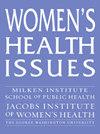探索患有慢性肌肉骨骼疼痛的怀孕和产后退伍军人的疼痛体验和疼痛管理。
IF 2.5
2区 医学
Q2 PUBLIC, ENVIRONMENTAL & OCCUPATIONAL HEALTH
引用次数: 0
摘要
背景:为了研究退伍军人在围产期如何经历和治疗疼痛,我们进行了一项定性研究,以探讨围产期退伍军人的疼痛经历、疼痛管理以及治疗的促进因素和障碍:我们确定了在全美 15 个退伍军人健康管理局(VHA)机构中的一个机构接受治疗的退伍军人,他们都参加了一项正在进行的队列研究。所有参与者都是在 2016 年 3 月至 2021 年 6 月期间分娩的新生儿,并符合孕前患有与疼痛相关的肌肉骨骼疾病的纳入标准。我们在 2021 年 11 月至 2022 年 1 月期间完成了对 30 名退伍军人的访谈。我们采用框架方法进行定性分析:样本中的退伍军人平均年龄为 31 岁,已婚(80%),白人(47%)。最常见的疼痛诊断类型是背痛(93%)和关节紊乱(73%)。我们确定了以下主要主题:1)退伍军人在怀孕期间的疼痛经历;2)围产期疼痛护理面临的挑战;3)退伍军人对退伍军人事务部围产期疼痛护理的建议。退伍军人在怀孕期间的疼痛经历各不相同,并发现了疼痛护理方面的一些障碍。退伍军人提出了退伍军人医疗管理局可以改善围产期疼痛护理的几种方法,包括对退伍军人医疗管理局的医护人员进行更多围产期疼痛护理方面的培训,以及扩大补充和综合保健的覆盖范围:结论:了解患有慢性疼痛的怀孕退伍军人的独特需求对于在围产期提供高质量的护理非常重要。参与本研究的退伍军人强调了退伍军人医疗管理局可以改进孕期和产后疼痛管理的几个方面。本文章由计算机程序翻译,如有差异,请以英文原文为准。
Exploring the Experience of Pain and Pain Management for Pregnant and Postpartum Veterans with Chronic Musculoskeletal Pain
Background
To examine how veterans experience and treat pain during the perinatal period, we conducted a qualitative study to explore the experiences of pain, pain management, and facilitators and barriers to treatment among perinatal veterans.
Methods
We identified veterans who received care at any of the 15 Veterans Health Administration (VHA) facilities across the United States and were enrolled in an ongoing cohort study. All participants gave birth to a newborn between March 2016 and June 2021 and met the inclusion criteria for having a prepregnancy pain-related musculoskeletal condition. We completed interviews with 30 veterans between November 2021 and January 2022. We used a framework approach to our qualitative analysis.
Results
Veterans in our sample were, on average, 31 years of age, married (80%), and white (47%). The most common type of pain diagnoses were back pain (93%) and joint disorders (73%). We identified the following major themes: 1) veteran experiences of pain during pregnancy, 2) challenges to pain care during the perinatal period, and 3) veteran recommendations for VHA perinatal pain care. Experiences of pain during pregnancy varied and several barriers to pain care were identified. Veterans suggested several ways the VHA could improve pain care during the perinatal period, including more training for VHA providers on perinatal pain care and greater complementary and integrative health coverage.
Conclusions
Understanding the unique needs of pregnant veterans with chronic pain is important to provide high-quality care during the perinatal period. Veterans who participated in this study highlighted several areas where the VHA could improve pain management during pregnancy and postpartum.
求助全文
通过发布文献求助,成功后即可免费获取论文全文。
去求助
来源期刊

Womens Health Issues
Multiple-
CiteScore
4.50
自引率
6.20%
发文量
97
审稿时长
32 days
期刊介绍:
Women"s Health Issues (WHI) is a peer-reviewed, bimonthly, multidisciplinary journal that publishes research and review manuscripts related to women"s health care and policy. As the official journal of the Jacobs Institute of Women"s Health, it is dedicated to improving the health and health care of all women throughout the lifespan and in diverse communities. The journal seeks to inform health services researchers, health care and public health professionals, social scientists, policymakers, and others concerned with women"s health.
 求助内容:
求助内容: 应助结果提醒方式:
应助结果提醒方式:


